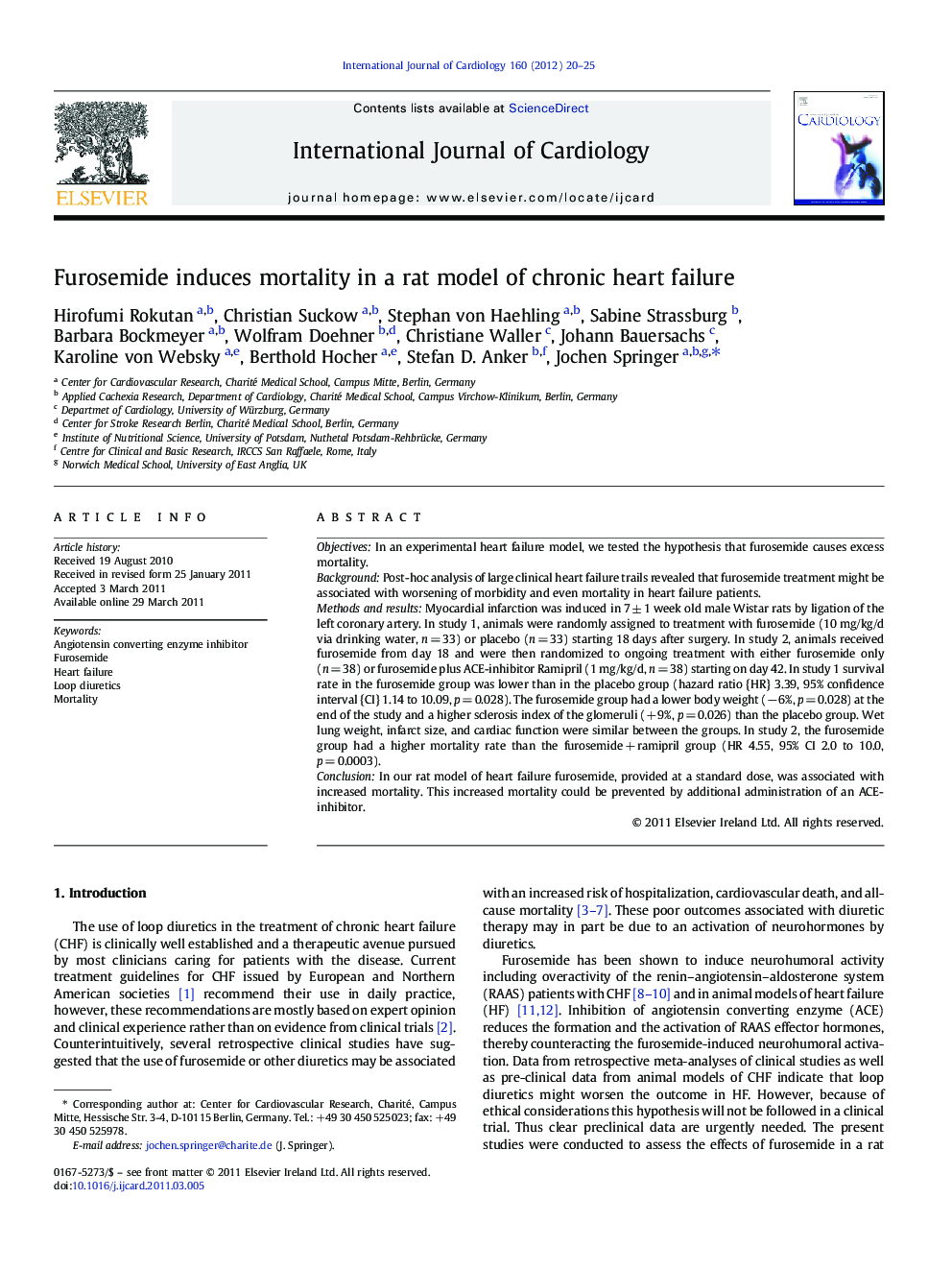| Article ID | Journal | Published Year | Pages | File Type |
|---|---|---|---|---|
| 2930104 | International Journal of Cardiology | 2012 | 6 Pages |
ObjectivesIn an experimental heart failure model, we tested the hypothesis that furosemide causes excess mortality.BackgroundPost-hoc analysis of large clinical heart failure trails revealed that furosemide treatment might be associated with worsening of morbidity and even mortality in heart failure patients.Methods and resultsMyocardial infarction was induced in 7 ± 1 week old male Wistar rats by ligation of the left coronary artery. In study 1, animals were randomly assigned to treatment with furosemide (10 mg/kg/d via drinking water, n = 33) or placebo (n = 33) starting 18 days after surgery. In study 2, animals received furosemide from day 18 and were then randomized to ongoing treatment with either furosemide only (n = 38) or furosemide plus ACE-inhibitor Ramipril (1 mg/kg/d, n = 38) starting on day 42. In study 1 survival rate in the furosemide group was lower than in the placebo group (hazard ratio {HR} 3.39, 95% confidence interval {CI} 1.14 to 10.09, p = 0.028). The furosemide group had a lower body weight (− 6%, p = 0.028) at the end of the study and a higher sclerosis index of the glomeruli (+ 9%, p = 0.026) than the placebo group. Wet lung weight, infarct size, and cardiac function were similar between the groups. In study 2, the furosemide group had a higher mortality rate than the furosemide + ramipril group (HR 4.55, 95% CI 2.0 to 10.0, p = 0.0003).ConclusionIn our rat model of heart failure furosemide, provided at a standard dose, was associated with increased mortality. This increased mortality could be prevented by additional administration of an ACE-inhibitor.
